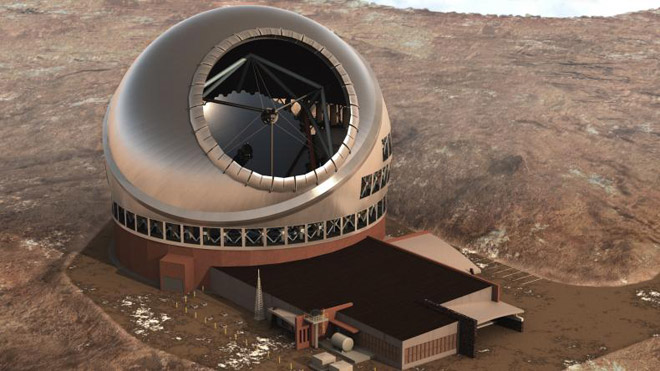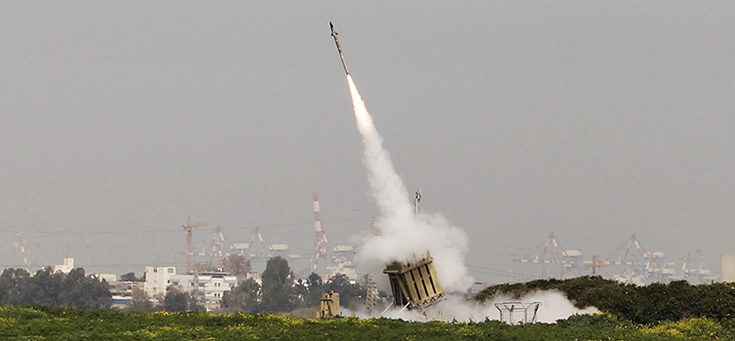
An artist concept illustrating the TMT Observatory at the proposed site on Mauna Kea. Photo: Courtesy TMT Observatory Corporation.
TOKYO (PTI): India along with Japan, the US, China and Canada will start work on the world's biggest telescope on Hawaii Island that will enable to identify an object as small as coin from a distance of 500 kms.
The 30-meter telescope, or TMT, will be established near the summit of the Mauna Kea volcano with a cost of USD 1.4 billion.
They plan to complete the construction in March 2022.
Japan will cover about a quarter of the construction costs.
To mark the start of construction, some 100 astronomers and officials from the five countries were scheduled to attend a ceremony held tomorrow at a location 4,012 meters high on Mount Mauna Kea, Kyodo news agency reported.
The TMT will be larger than Japan's Subaru Telescope, one of the world's biggest, which was also built on the summit of Mauna Kea and started observation in 1999.
The Subaru Telescope's single main mirror measures 8.2 meters in diameter, while the TMT will be composed of 492 hexagonal mirrors, each measuring 72 cm across.
The TMT's light-condensing capabilities will be 13 times greater than the Subaru telescope's, enabling the identification of an object as small as a coin from a distance equivalent to 500 kms, distance between Osaka and Tokyo.
Astronomer Masanori Ie, a professor at the National Astronomical Observatory of Japan who leads the Japanese team on the TMT project, said the new telescope will broaden the understanding of the cosmos.
A telescope with greater light-condensing capabilities can search for stars that are less bright or farther from Earth. The most distant and oldest star observed to date was born some 800 million years after the Big Bang.
The TMT will help astronomers observe stars which were born 200 million to 400 million years after the Big Bang.
The TMT will also have the potential to help identify whether planets outside the solar system have atmospheres that are capable of supporting life.
 Next Article
Next Article













The Indian Air Force, in its flight trials evaluation report submitted before the Defence Ministry l..
view articleAn insight into the Medium Multi-Role Combat Aircraft competition...
view articleSky enthusiasts can now spot the International Space Station (ISS) commanded by Indian-American astr..
view article